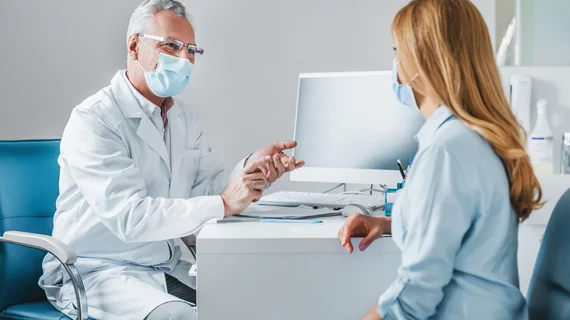Radiologists and nonphysicians agree that referring or primary care providers should be in charge of ensuring follow-up care is performed for incidentally detected findings, new research shows.
Follow-up compliance rates for actionable incidental findings (AIFs) sit as low as 39%, with communication failures and provider notification overload top drivers. And failing to close this gap in care has been shown to lead to adverse patient outcomes, experts explained Aug. 29 in Current Problems in Diagnostic Radiology.
A survey of nearly 400 healthcare providers, including about 250 radiologists, showed most are aware of the need to ensure next steps are completed. It was interesting, the authors noted, that a majority believe PCPs or referrers ought to be the ones discussing next steps with patients and arranging for additional care.
This strategy can come with potential pitfalls, Director of Radiology Quality at Children’s Healthcare of Atlanta Nadja Kadom, MD, and colleagues noted.
“Gaps in follow-up care have been identified when relying solely on providers’ communications to patients,” Kadom, who is also an associate professor at Emory University School of Medicine, et al. added. “To close this gap, multistage tracking systems operated by radiology practices can increase follow-up completion rates by as much as 52%.”
The findings are the product of a 2019 grant won by the American College of Radiology to develop a quality measure set for enhancing AIF follow-up imaging rates. ACR created a 20-member technical expert panel to investigate this problem, surveying 375 healthcare professionals between May and July 2020.
Both nonphysicians and radiologists acknowledged there is some risk associated with incomplete follow-up for incidental findings.
But 66% of rads said their practice didn’t track the completion of follow-up imaging or biopsy for AIFs. At the same time, 43% of nonphysicians said such tracking does take place.
For rads who do keep tabs on follow-ups, 67% said they use software apps to do so, followed by nonradiology staff (29%). Nonphysicians also said software is often used for tracking (35%).
Overall, the authors say quality measure benchmarks can drive the implementations of follow-up tracking. This, in turn, may encourage initiatives between providers and help them align on core issues related to incidental findings care.
“This alignment would be fundamental when requesting resources (e.g., staff and digital tools) integral for supporting systems that track the completion of radiology follow-up recommendations,” the authors concluded.
Read the full survey results here.

